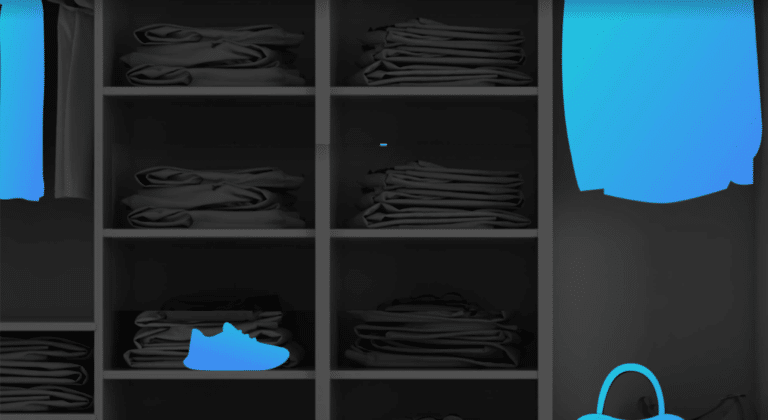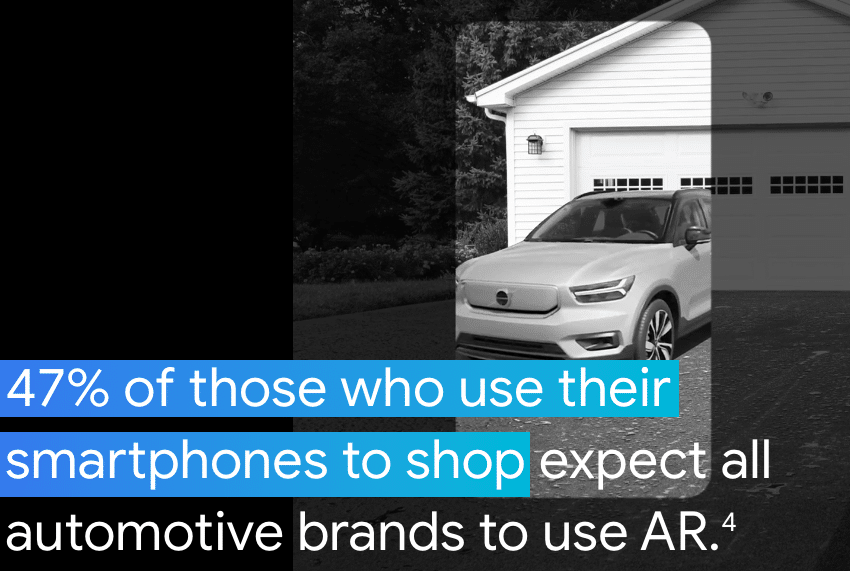
AR continues to prove itself as a shopping tool. It can help consumers visualize products on “faces and spaces,” to make better-informed decisions. This is amplified during a pandemic when it can bring back some of the product essence and dimension that’s lost in retail lockdowns.
AR meanwhile resonates on the sell side: brands and retailers. On one level, it appeals to their creative sensibilities — erstwhile stuck in 2D media — to demonstrate products in their full 3D glory. On a more practical level, they’re seeing real results from AR-based campaigns.
This is what we call “camera commerce” and it continues to be validated in case studies and figures we track from eCommerce leaders like Shopify. We recently rounded up AR shopping performance metrics as well as consumer sentiment research that validates its traction.
For more of the latter, Google has new figures that support AR’s utility as a shopping tool. According to its report, “The Shopping Filter: Marketers are Using Augmented Reality to Reinvent the Digital Store,” 90 percent of consumers have or would consider using AR for shopping.
Report Card
Drilling down further, 98 percent of those who have used AR have found it helpful in their shopping flow. This is obviously a strong endorsement of the technology, as few consumer-facing technologies — hardware or software — have satisfaction ratings approaching 100 percent.
This high satisfaction is countered by relatively-low usage volume for AR. It’s reaching meaningful traction but is still in early-adopter phases relative to more ubiquitous technologies like web search. But that’s slowly changing through positive reinforcement, per the sentiments above.
To validate this hypothesis, AR is reaching a point expectation for some consumers and within some verticals. Specifically in cosmetics — a product category where the technology has found fertile soil — 43 percent of mobile shoppers now expect it according to Google’s report.
Another vertical that’s become a natural fit for AR shopping is cars. Google reports that 47 percent of mobile shoppers expect AR to be part of their car-buying flow. In this case, saving consumers a trip to the car lot — with all its clichéd trappings of pushy salespeople — resonates.

Common Thread
The above examples map well to AR… but for different reasons. In cosmetics, AR solves a specific pain point: the need to see the product on one’s face before buying. With cars, it’s a large considered purchase where three-dimensional product visualization instills confidence.
For these and other products, not only does AR provide more dimensional understanding, but it’s well-timed for Covid-era demand signals, as noted. Retail constraints have forced heightened levels of e-commerce and remote product consideration… where AR adds the most value.
Meanwhile, the cars and cosmetics use cases represent product attributes that are a natural fit for AR. Other attributes include items that are expensive to ship, such as couches and TVs. E-tailers likewise embrace AR in these areas because it reduces margin-depleting returns.
Beyond product attributes, there’s the matter of frequency. Cars sales are a great endpoint but they happen every few years, whereas CPG products are consumed daily. And when physical retail comes roaring back, contextualizing storefronts with Google Lens could resonate.
Camera Commerce
Speaking of Google Lens, that’s where Google’s vested interest in these data lie. To level set on definitions, Google Lens represents visual search, which is similar to, but different than, the AR visualization use cases above. It’s more about pointing your phone at an item to identify it.
The product attributes that make visual search shine are different than those outlined above. They rather include visual complexity or unclear surface-level branding that AI can help identify. This is the case with fashion & accessories, as well as geo-spatial local discovery.
With AR visualization and visual search — collectively representing camera commerce — Google sees dollar signs. There will be natural monetization for high-intent product queries. This is where Google sees opportunity to future-proof search — starting with the camera-forward Gen Z.
In the meantime, the pre-requisite pieces are moving into place. Consumers find camera commerce valuable today — albeit in early-adopter numbers. So the wild card for Google (and Pinterest) is if visual search can get over that hump and reach ubiquity as a shopping tool.






